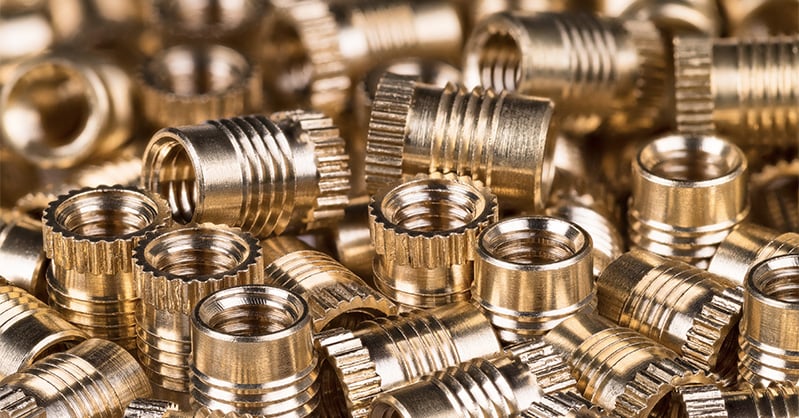High-quality inserts blend utility and durability
High-quality, durable threaded inserts are critical components of your business. They’re small but they can have an enormous impact on your business via customer complaints, replacement costs, and other ancillary damage to your products should they fail consistently.
Procuring the right threaded inserts for your needs is important and the choices available are many. Buying any old insert from any distributor is asking for trouble. Hi-Tech Fasteners (HTF) is here to help. We’ve pulled together this fastener cheat sheet to get you quickly up to speed on the different types and functions of threaded inserts. We hope this assists you in identifying what you need, and we’ll be ready to deliver the high-quality fasteners you need faster than anyone in the industry.
Threaded Insert Overview
Threaded Inserts for Plastics:
- Inserts are generally specified in applications where strong, durable metal threads are required in plastic materials, particularly where frequent assembly and disassembly of the unit for service or repair is necessary
- Inserts are available in brass, stainless steel, and aluminum
- A large variety of ultrasonic, molded-in or press-in inserts are available
- Inserts should meet the strictest quality guidelines maintained through in-process audits
Ultrasonic Threaded Inserts:
- These inserts are installed by pressing the fastener (with ultrasonic insertion equipment) into the mounting hole while simultaneously applying a high-frequency vibration
- Frictional heat caused by the vibration melts the plastic around the insert allowing easy insertion. When the vibration ceases, the plastic solidifies, locking the insert permanently in place
- A thermal press may also be used to create the heat necessary for installation
Molded-in Inserts:
- These inserts are installed during the molding process. The inserts are located in the mold cavity by core pins. When the mold opens, the core pins are withdrawn, leaving the inserts permanently encapsulated in the plastic section with only the threads exposed.
- Installing the inserts during the molding process eliminates the need for secondary steps or costly installation equipment
Press-in Inserts:
- These threaded inserts are installed by simply pressing them into pre-molded or drilled holes. Installation is accomplished using any standard press at any time during the production process.
- These inserts eliminate the need for heat or ultrasonics
Avoiding Problems
For fasteners to be effective and durable, you need to select the proper fastener and then apply the appropriate installation method. Choosing an incorrect or poor quality fastener and then using the wrong installation approach is a recipe for part failure.
So, education about fasteners and fastener installation is the first step to avoiding problems. There are, however, a few other possible complexities to be aware of. For example:
- Using plastic that contains 40% or more fillers, lubricants, or glass leads to a higher rate of installation or threaded insert performance problems
- Molded holes perform better than drilled holes; molded holes are just stronger and more durable
- Color coding your inserts can be helpful to avoid mixing components, which can lead to poor performance or part failure
We hope this quick cheat sheet on threaded insert uses and installation methods has been helpful.
The HTF team is ready to help you in any way. We have a wide array of fasteners available that can meet any need and function, and we can deliver it faster than our competition. We take great pride in having what you need and getting it to you when you need it, while delivering the highest level of customer service in the industry. That’s why the top manufacturers in the industry partner with us.
Reach out to us today. We’re ready to help.






.png?width=800&name=InventoryXpert-Blog-Alt%20(5).png)


